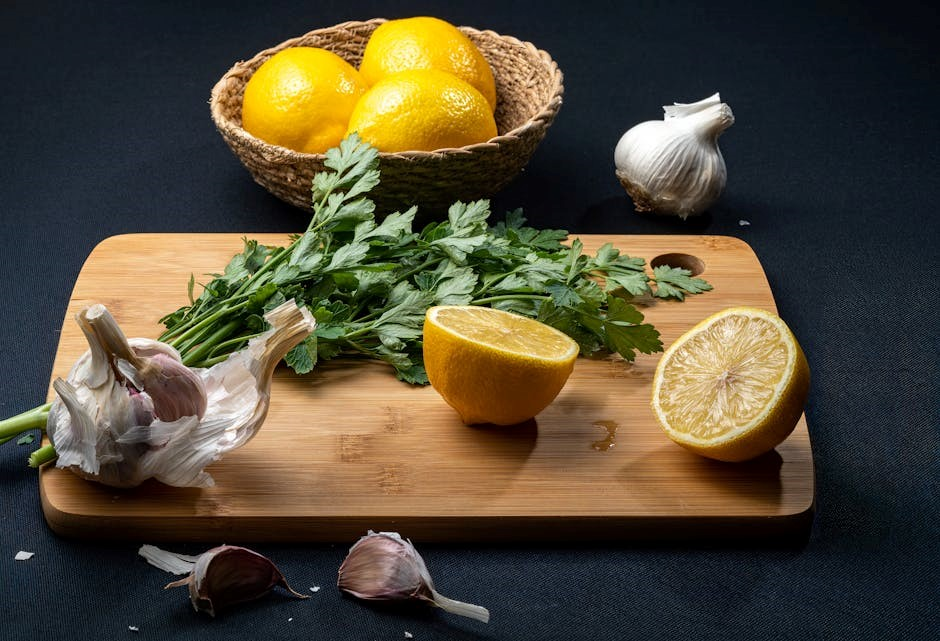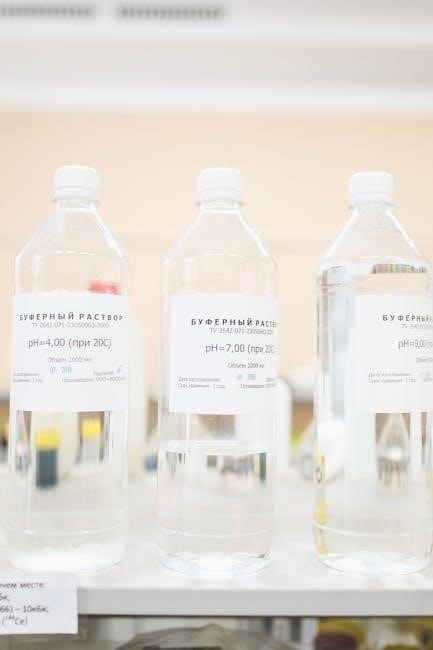Acid reflux occurs when stomach acid flows back into the esophagus, causing discomfort․ Diet plays a significant role, with certain foods triggering symptoms like heartburn and chest pain․ Common culprits include citrus fruits, tomatoes, chocolate, spicy dishes, fried foods, caffeine, alcohol, mint, processed snacks, and high-sugar foods․ These foods relax the lower esophageal sphincter or increase stomach acid production, leading to immediate symptoms and long-term complications if left unmanaged․ Understanding and avoiding trigger foods is essential for controlling acid reflux and preventing conditions like chronic inflammation or Barrett’s esophagus․ A tailored dietary approach helps alleviate symptoms and improve quality of life․
1․1 Definition and Overview
Acid reflux, also known as gastroesophageal reflux (GERD), occurs when stomach acid flows back into the esophagus, causing discomfort․ It happens when the lower esophageal sphincter (LES) weakens or relaxes inappropriately, allowing acid to rise․ Common triggers include diet, overeating, and lying down after meals․ Symptoms often include heartburn, chest pain, and difficulty swallowing․ Certain foods, such as citrus fruits, tomatoes, chocolate, and fried items, are known to exacerbate symptoms by relaxing the LES or increasing acid production․ Understanding the connection between diet and acid reflux is crucial for managing symptoms and preventing complications like esophageal irritation or inflammation․ Adopting a mindful eating approach and avoiding trigger foods can significantly improve quality of life for those affected․
1․2 How Diet Impacts Acid Reflux
Diet plays a significant role in triggering and managing acid reflux symptoms․ Certain foods can weaken the lower esophageal sphincter (LES), allowing stomach acid to flow back into the esophagus․ Foods high in fat, sugar, or spice can delay digestion, increasing pressure on the stomach and promoting acid production․ Additionally, consuming large or heavy meals can overburden the stomach, leading to reflux․ A diet rich in processed foods, caffeine, and alcohol further exacerbates symptoms by irritating the esophageal lining and disrupting digestive balance․ By identifying and avoiding these triggers, individuals can reduce the frequency and severity of acid reflux episodes, promoting a healthier digestive system and improving overall well-being․

Common Foods to Avoid
Certain foods trigger acid reflux by relaxing the lower esophageal sphincter or increasing acid production․ Avoiding these foods is crucial for managing symptoms and preventing complications․
2․1 Citrus Fruits

Citrus fruits, such as oranges, grapefruits, and lemons, are highly acidic and can trigger acid reflux․ Their high acidity relaxes the lower esophageal sphincter, allowing stomach acid to flow back into the esophagus․ Even small amounts of citrus juice can cause discomfort in sensitive individuals․ The natural acids in these fruits can also irritate the esophageal lining, worsening symptoms like heartburn and chest pain․ While citrus fruits are nutritious, those with acid reflux may need to limit or avoid them entirely․ Opting for non-citrus fruits like bananas or melons can help reduce reflux episodes while still providing essential nutrients and fiber․
2․2 Tomatoes and Tomato-Based Products

Tomatoes and tomato-based products, such as sauces, soups, and pasta dishes, are common triggers for acid reflux․ Their high acidity can weaken the lower esophageal sphincter, allowing stomach acid to flow back into the esophagus․ Additionally, tomatoes contain malic acid and citric acid, which can irritate the esophageal lining and exacerbate heartburn․ Even cooked or processed tomato products can cause discomfort, as their acidic nature remains․ For those with severe reflux, avoiding tomato-based dishes or substituting with low-acid alternatives, like bell peppers or cucumbers, may help alleviate symptoms․ Moderation is key, as small portions may be tolerated by some without triggering reflux․
2․3 Chocolate
Chocolate is a common trigger for acid reflux due to its high fat and caffeine content, which can relax the lower esophageal sphincter․ Theobromine, a compound found in chocolate, further exacerbates symptoms by stimulating stomach acid production․ Dark chocolate, in particular, contains higher levels of cocoa, increasing acidity․ Additionally, chocolate can delay gastric emptying, allowing acid to remain in the stomach longer and potentially reflux into the esophagus․ While occasional consumption may not cause severe issues for everyone, individuals with frequent acid reflux should limit or avoid chocolate to reduce symptoms․ Choosing low-fat or milk chocolate alternatives may help, but moderation is still key․
2․4 Spicy Foods
Spicy foods are known to trigger acid reflux due to the compound capsaicin, which can irritate the esophagus and cause discomfort․ Capsaicin relaxes the lower esophageal sphincter, allowing stomach acid to flow back into the esophagus․ Additionally, spicy foods can stimulate the production of stomach acid, worsening symptoms like heartburn and chest pain․ While some individuals may tolerate mild spices, others with severe acid reflux should avoid highly spicy dishes․ It’s important to identify personal triggers, as sensitivity to spice can vary greatly․ Incorporating low-acid, non-spicy alternatives into meals can help manage symptoms effectively without completely eliminating flavor from the diet․
2․5 Fried and Greasy Foods
Fried and greasy foods are high in fat, which slows down digestion and puts pressure on the lower esophageal sphincter (LES)․ This delay in gastric emptying allows stomach acid to flow back into the esophagus, triggering acid reflux symptoms․ The high-fat content also increases the production of cholecystokinin, a hormone that relaxes the LES, further worsening symptoms․ Foods like french fries, fried chicken, and doughnuts are common culprits․ To manage acid reflux, it’s advisable to limit or avoid these foods․ Opting for baked, grilled, or steamed alternatives can help reduce discomfort․ Additionally, choosing smaller portions of healthier fats, such as avocado or olive oil, may be better tolerated than greasy options․
2․6 Coffee and Caffeinated Beverages
Coffee and caffeinated beverages are common triggers for acid reflux․ Caffeine relaxes the lower esophageal sphincter (LES), allowing stomach acid to flow back into the esophagus․ Both regular and decaffeinated coffee can cause this effect due to their acidity․ Additionally, caffeine stimulates stomach acid production, which can worsen symptoms․ Even herbal teas with caffeine can contribute to discomfort․ For those sensitive to caffeine, reducing or eliminating these beverages may help alleviate acid reflux․ However, some people find moderate consumption tolerable․ It’s important to monitor individual reactions and adjust intake accordingly to minimize symptoms and improve digestive comfort․
2․7 Alcohol
Alcohol is a significant trigger for acid reflux, as it can weaken the lower esophageal sphincter (LES), allowing stomach acid to flow back into the esophagus․ Beer, wine, and spirits all contribute to this effect․ Alcohol also slows gastric emptying, increasing pressure on the LES and prolonging exposure to acidic stomach contents․ Additionally, alcohol can irritate the esophageal lining, worsening symptoms․ For individuals prone to acid reflux, reducing alcohol consumption or avoiding it entirely may help alleviate symptoms․ Moderation is key, but complete avoidance is often recommended for those with severe or frequent reflux episodes to prevent discomfort and long-term complications․
2․8 Mint and Peppermint
Mint and peppermint are common triggers for acid reflux due to their ability to relax the lower esophageal sphincter (LES)․ While mint can provide temporary digestive relief, it often worsens reflux symptoms by allowing stomach acid to flow more easily into the esophagus․ Peppermint, in particular, is known to lower LES pressure, making it a problematic choice for those with acid reflux․ Even in small amounts, mint-based teas, gums, or candies can trigger discomfort․ Moderation is key, but for individuals with severe reflux, avoiding mint altogether may be necessary to prevent symptoms like heartburn and regurgitation․ This applies to both peppermint and spearmint․
2․9 Processed Snacks
Processed snacks, such as chips, crackers, and cheese puffs, are often high in unhealthy fats, sodium, and preservatives, which can worsen acid reflux․ These snacks can slow digestion, leading to increased pressure on the lower esophageal sphincter (LES), making it easier for stomach acid to flow back into the esophagus․ Additionally, many processed snacks are high in acidity or contain ingredients like artificial flavors and colors that can irritate the esophageal lining․ Regular consumption of these snacks can lead to frequent heartburn and discomfort․ To manage acid reflux, it’s important to limit or avoid processed snacks and opt for healthier, less acidic options․ Always check nutrition labels to make informed choices․
2․10 High-Sugar Foods
High-sugar foods, such as candies, sodas, and pastries, can significantly contribute to acid reflux symptoms․ These foods are often acidic, potentially irritating the esophagus․ Overconsumption of sugar can lead to poor dietary choices and overeating, increasing stomach pressure․ This pressure may cause the lower esophageal sphincter (LES) to relax, allowing acid reflux․ High-sugar diets are also linked to weight gain, a known risk factor for reflux․ Additionally, sugar fermentation in the gut can produce gases that worsen symptoms․ Limiting high-sugar intake is crucial for managing acid reflux effectively․
Why These Foods Trigger Acid Reflux

Certain foods trigger acid reflux by relaxing the lower esophageal sphincter, increasing stomach acid production, or delaying gastric emptying, leading to symptoms like heartburn and discomfort․
3․1 Relaxation of the Lower Esophageal Sphincter
Certain foods can cause the lower esophageal sphincter (LES) to relax improperly, allowing stomach acid to flow back into the esophagus․ Foods high in fat, such as fried or greasy items, can delay gastric emptying, increasing pressure on the LES․ Chocolate contains methylxanthines, which can weaken the LES․ Caffeine and alcohol also relax the sphincter, making reflux more likely․ Spicy foods may irritate the esophagus, potentially weakening the LES over time․ Citrus fruits and tomatoes, being acidic, can further irritate the esophagus if the LES is compromised․ Understanding how these foods affect LES function is key to managing acid reflux effectively․
3․2 Increased Stomach Acid Production
Certain foods can stimulate the stomach to produce more acid, worsening acid reflux symptoms․ High-fat foods, such as fried items, delay gastric emptying, leading to increased acid production․ Spicy foods and citrus fruits can irritate the stomach lining, prompting the release of excess acid․ Chocolate contains compounds that may stimulate acid secretion, while caffeine and alcohol can also boost stomach acid production․ Even tomatoes and tomato-based products, due to their acidity, can trigger this response․ Over time, a diet heavy in these foods can lead to chronic overproduction of stomach acid, exacerbating reflux and causing discomfort․ Managing acid reflux often involves limiting these acid-stimulating foods to reduce symptoms and prevent long-term complications․

Effects of Trigger Foods on the Body
Trigger foods can activate acid reflux, causing immediate symptoms like heartburn and discomfort․ Over time, frequent exposure may lead to chronic inflammation and esophageal damage․
4․1 Immediate Symptoms
Consuming trigger foods can promptly lead to acid reflux symptoms, primarily due to the relaxation of the lower esophageal sphincter․ Common immediate effects include heartburn, a burning sensation in the chest and throat, and regurgitation of acidic stomach contents․ Some individuals may also experience chest discomfort, bloating, or a sour taste in the mouth․ These symptoms typically occur within minutes to hours after eating problematic foods․ The severity can vary, but they often disrupt daily activities and may worsen when lying down․ Identifying and avoiding these triggers is crucial to managing symptoms effectively․ Immediate reactions highlight the direct impact of diet on acid reflux episodes․
4․2 Long-Term Consequences
Chronic acid reflux can lead to serious long-term complications if trigger foods continue to be consumed․ Prolonged exposure to stomach acid can cause inflammation and damage to the esophageal lining, potentially resulting in conditions like esophagitis or strictures․ Over time, this may narrow the esophagus, making swallowing difficult․ Additionally, frequent acid reflux increases the risk of Barrett’s esophagus, a precancerous condition where esophageal tissue transforms into intestinal-like lining․ Untreated, this can progress to esophageal cancer․ Long-term effects also include chronic pain and discomfort, impacting overall quality of life․ Addressing dietary triggers early is essential to prevent these severe and potentially irreversible health issues․
Foods That Can Be Consumed in Moderation
Foods like processed snacks and high-fat foods can be consumed in moderation, but overindulgence may worsen acid reflux symptoms for many individuals․ Portion control is key․
5․1 Processed Foods
Processed foods can be consumed in moderation but should be chosen carefully to avoid triggering acid reflux․ Many processed snacks, such as chips, crackers, and baked goods, are high in unhealthy fats, sodium, and preservatives, which can irritate the esophagus․ Foods like ready-to-eat meals and canned goods often contain additives that may worsen symptoms․ However, some processed options, like whole-grain crackers or low-sodium soups, are less likely to cause discomfort․ It’s essential to read labels and opt for low-fat, low-sugar, and low-sodium versions․ Moderation is key, as overconsumption can lead to increased stomach acid and discomfort․ Balancing processed foods with natural, unprocessed options helps manage symptoms effectively․
5․2 High-Fat Foods
High-fat foods can be consumed in moderation but should be chosen cautiously to prevent acid reflux․ Foods like fatty meats, fried items, and rich desserts slow digestion, delaying stomach emptying and increasing pressure on the lower esophageal sphincter․ This can lead to acid reflux․ Opt for lean proteins, such as poultry or fish, and healthier fats like avocado or olive oil․ Avoid heavy sauces and gravies, which are often high in fat․ Moderation is key, as excessive fat intake can trigger symptoms․ Balancing high-fat foods with low-fat alternatives helps manage acid reflux effectively while still enjoying flavorful meals․

Long-Term Effects of a Poor Diet
Chronic inflammation and prolonged acid exposure can lead to severe esophageal damage․ A poor diet may result in conditions like esophagitis or Barrett’s esophagus over time if left unmanaged․
6․1 Chronic Inflammation
Chronic inflammation occurs when stomach acid frequently flows back into the esophagus, irritating the esophageal lining․ Over time, this repeated exposure can cause persistent inflammation, leading to discomfort and pain․ The esophageal mucosa becomes damaged, making it more susceptible to further irritation․ If left unaddressed, chronic inflammation can result in complications such as narrowing of the esophagus, known as stricture formation, which can make swallowing difficult․ Additionally, prolonged inflammation may increase the risk of esophageal ulcers and scarring․ Managing acid reflux through dietary changes is essential to reduce inflammation and prevent these long-term complications․ A balanced diet helps mitigate acid production and protects the esophageal lining from further damage․
6․2 Barrett’s Esophagus
Barrett’s esophagus is a serious complication of chronic acid reflux, where the lining of the esophagus transforms into tissue resembling the small intestine, a process called intestinal metaplasia․ This condition increases the risk of esophageal adenocarcinoma, a type of cancer․ Chronic inflammation and acid exposure damage the esophageal cells, leading to abnormal changes․ Symptoms often mirror those of acid reflux, such as heartburn, but may progress to difficulty swallowing or chest pain․ Early diagnosis through endoscopy is critical․ Managing acid reflux through dietary adjustments can help prevent progression․ Regular monitoring is essential for individuals with Barrett’s esophagus to reduce cancer risk and ensure timely intervention if abnormalities arise․

Identifying Personal Trigger Foods
Identifying personal trigger foods involves tracking symptoms and meals to pinpoint problematic items․ A food diary or elimination diet helps determine which foods to avoid for relief․
7․1 Keeping a Food Diary
Keeping a food diary is a practical approach to identifying trigger foods for acid reflux․ By documenting meals, portions, and symptoms, individuals can track patterns and correlations․ Note the time of eating, specific foods consumed, and any subsequent discomfort or heartburn․ This tool helps pinpoint which foods consistently cause issues․ Over time, patterns emerge, allowing for personalized dietary adjustments․ Consistency is key; regular entries ensure accurate insights․ Reviewing the diary alongside a healthcare provider can further refine dietary strategies․ This method is non-invasive and empowers individuals to take control of their condition through informed food choices․
7․2 Elimination Diet
An elimination diet is a structured approach to identifying trigger foods for acid reflux․ It involves removing common culprit foods, such as citrus, tomatoes, chocolate, and spicy or fatty items, from the diet for 2-4 weeks․ During this phase, symptoms are closely monitored․ If improvements occur, foods are reintroduced one at a time to assess their impact․ This method helps pinpoint specific foods that worsen symptoms․ Tracking progress in a food diary is essential․ The elimination diet requires discipline but offers insights into personalized triggers․ It is often recommended under the guidance of a healthcare provider to ensure safety and effectiveness․ This approach can lead to long-term dietary adjustments and symptom relief․

Importance of Portion Control and Meal Timing
Managing portion sizes and timing meals helps reduce acid reflux symptoms․ Eating smaller meals avoids overfilling the stomach, while allowing time for digestion before lying down․
8․1 Eating Smaller, More Frequent Meals
Eating smaller, more frequent meals can significantly reduce acid reflux symptoms․ Overloading the stomach with large portions puts pressure on the lower esophageal sphincter (LES), increasing the likelihood of acid reflux․ By breaking meals into 4-6 smaller portions throughout the day, digestion becomes more manageable, reducing stomach pressure and acid production․ This approach also prevents bloating and discomfort, common triggers for heartburn․ Additionally, smaller meals are easier to digest, allowing the stomach to empty more efficiently and reducing the risk of acid backflow․ Avoiding overeating is a simple yet effective strategy to alleviate symptoms and improve overall digestive health․
8․2 Avoiding Late-Night Eating
Avoiding late-night eating is crucial for managing acid reflux symptoms․ Lying down after a meal can cause stomach acid to flow back into the esophagus, worsening heartburn․ When the body is horizontal, gravity no longer helps keep acid in the stomach․ Eating close to bedtime can also lead to larger portions or poorer food choices, exacerbating symptoms․ To reduce nighttime reflux, finish eating at least 2-3 hours before lying down․ This allows the stomach to partially empty and reduces pressure on the lower esophageal sphincter․ Establishing an earlier dinner time can significantly improve sleep quality and alleviate morning discomfort․ Prioritizing this habit helps maintain better digestive health and prevents acid reflux flare-ups․

Role of a High-Fiber, Low-Sugar Diet
A high-fiber, low-sugar diet aids digestion, prevents reflux, and supports weight management․ It reduces inflammation and improves overall gut health, alleviating acid reflux symptoms effectively․
9․1 Benefits of High-Fiber Foods
High-fiber foods play a crucial role in managing acid reflux by promoting digestive health․ They help prevent symptoms by improving bowel regularity and reducing inflammation in the digestive tract․ Fiber-rich foods like whole grains, fruits, and vegetables create a physical barrier against acid reflux by adding bulk to stools and slowing gastric emptying․ This reduces pressure on the lower esophageal sphincter, minimizing acid backflow․ Additionally, high-fiber diets support healthy weight management, which is essential for alleviating reflux symptoms․ By improving gut motility and overall digestive function, high-fiber foods contribute to a balanced diet that helps mitigate acid reflux discomfort effectively;
9․2 Reducing Sugar Intake
Reducing sugar intake is essential for managing acid reflux, as high-sugar foods can trigger inflammation and worsen symptoms․ Sugary foods and beverages, such as sodas, desserts, and processed snacks, can cause stomach acid production to increase, leading to heartburn and discomfort․ Additionally, high sugar intake is often associated with weight gain, which can put extra pressure on the abdomen, further exacerbating reflux․ Cutting down on sugary foods helps maintain a healthier digestive system and reduces the risk of acid reflux flare-ups․ Opting for natural sources of sweetness, like fruits, and balancing sugar intake with nutrient-rich foods can promote better digestion and overall well-being․
